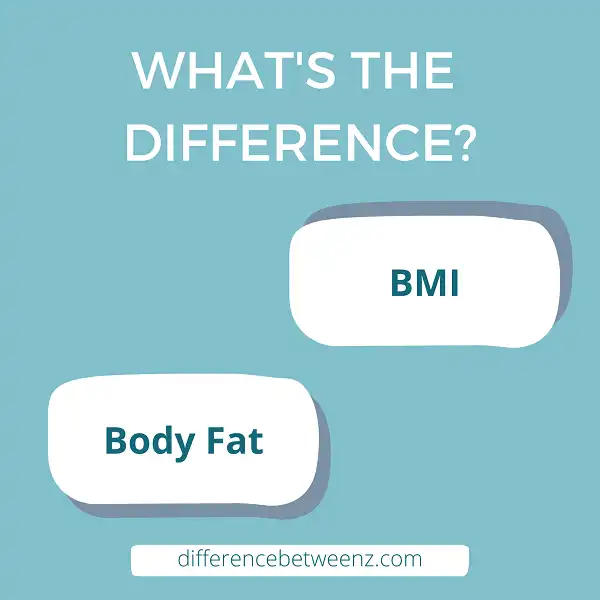In terms of difference, BMI and body fat percentage are two popular ways to measure your physical composition. BMI stands for Body Mass Index and is a calculation that uses your height and weight to determine if you are obese or not. A body fat percentage measures the amount of fat on your body compared to everything else. Obviously, athletes will have a higher muscle mass and a lower percentage of body fat than the average person. If you are trying to lose weight, it is important to know which measurements to focus on. You may need to lose weight in order to improve your BMI, but if you have a high body fat percentage, simply losing weight may not be enough.
What is BMI?
BMI stands for Body Mass Index. BMI is a number calculated from a person’s weight and height. BMI provides a reliable indicator of body fatness for most people. BMI does not measure body fat directly, but research has shown that BMI correlates to direct measures of body fat, such as underwater weighing and dual energy x-ray absorptiometry (DXA). BMI can be used to screen for weight categories that may lead to health problems but it is not diagnostic of the body fatness or health of an individual. For example, BMI does not distinguish between excess fat, muscle, or bone mass, all of which contribute to a person’s weight. Nor does BMI identify where the excess fat is located on the body, which is an important factor in determining whether someone might be at increased health risk. Therefore, BMI should be considered one of several factors related to weight status when taking into account someone’s overall health risk. In general, the higher your BMI, the greater your risk for certain diseases such as heart disease, high blood pressure, type 2 diabetes, gallstones, breathing problems, and certain cancers. For adults 20 years and older, BMI is interpreted using standard weight status categories shown in the following table.
What is Body Fat?
Body fat is a type of connective tissue that stores energy in the form of lipids. It is found in both animals and humans, and it serves several important functions. In addition to providing a source of energy, body fat helps to insulate the body and protect organs from impact. It also plays a role in hormone production and regulates body temperature. Body fat exists in two forms: subcutaneous fat, which is located beneath the skin, and visceral fat, which surrounds the organs. Although some body fat is essential for good health, too much can lead to obesity, which increases the risk of health problems such as heart disease, stroke, and type 2 diabetes.
Difference between BMI and Body Fat
BMI and Body Fat are two terms that are often used interchangeably, but they actually refer to two different things. BMI, or body mass index, is a measure of your weight in relation to your height. Body fat, on the other hand, is a measure of the amount of fat tissue in your body. BMI is calculated by dividing your weight in kilograms by your height in meters squared. Body fat percentage is calculated by dividing your body fat tissue by your total body weight. BMI is a good general indicator of whether you are at a healthy weight, but it does not take into account factors like muscle mass or bone density. Body fat percentage is a more accurate measure of whether you have too much fat tissue in your body, but it is more difficult to calculate.Both BMI and body fat percentage have their own limitations, but they can be useful tools for assessing your overall health.
Conclusion
While BMI is a good indicator of how much body fat you have, it doesn’t take into account the distribution of that fat. This is why body composition testing is important – it can give you a more accurate reading on your overall health and fitness level.


